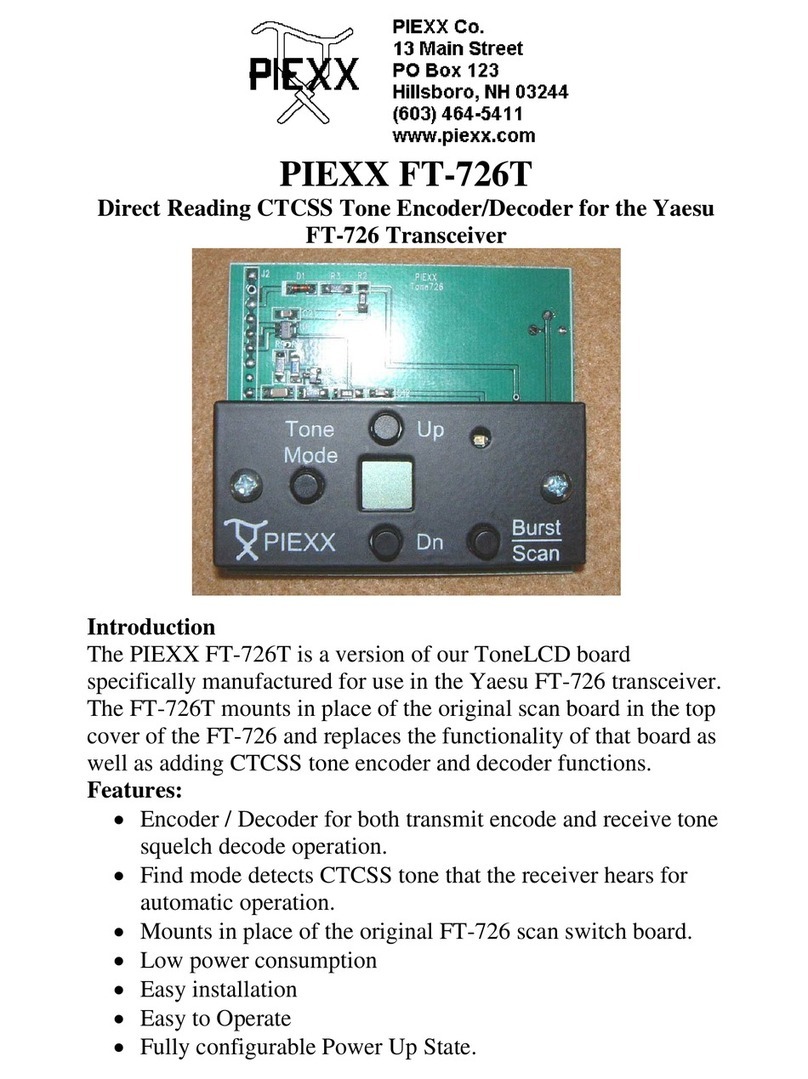
Set up
After you have installed the ToneLCD on your transceiver, and applied
power, the display should show
tOn
briefly, and then it will show different
information depending on how the ToneLCDhas been set up.
You will need to adjust the setup parameters to match your hardware
configuration. To enter the setup mode, press and hold the
MODE
button,
for about 1 second, until the first setup parameter,
InH or InL
, appears.
Once in the setup mode, you can cycle through the various setup parameters
by momentarily pressing the
MODE
button (don’t hold it, that gets you out
of setup). Each time you press the
MODE
button, the program cycles to the
next setup parameter. Pressing the
Up
or
Down
buttons will change the
value of a parameter. The setup parameters are defined as follows:
•
In (H or L)
– This sets the active polarity of the Input signal
line. L means low, and requires that the input signal be
grounded to be active. H indicates that the active input state is
high or floating.
•
In (r, t or
-) – This parameter sets the purpose of the input
signal.
r
is for receive, or more specifically for hang up mode.
t
is for transmit, this allows the input to be used to enable or
disable the CTCSS output tone. Finally, if this parameter is set
to
-
, the input signal is unused.
•
tO (H or L)
- Tone Detect output state. If the tO state is set to
L, the Tone Detect output will be pulled low in the presence of
a valid CTCSS tone applied to the audio input. If the tO state is
set to H, the Tone Detect output will be floating (high if you
pull it up with a resistor) in the presence of a valid CTCSS tone
applied to the audio input. The Tone Detect output is an open
collector transistor output.
•
tSt
– This is a test mode that allows you to see the state of the
input signal as well as letting you change the state of the Tone
Detect Output signal. You enter the test state by pressing either
the
Up
or
Down
buttons when the
tSt
display is shown. When
you enter the test mode, the display will change to
I-O
where
the I will be either a 0 or a 1, indicating the state of the input
signal, and O will be either H or L indicating whether the
output state is High (floating) or Low. Pressing the
Up
or
Down
buttons will flip the state of the Tone Detect Output.
Pressing the
MODE
button will leave the test mode and the
























